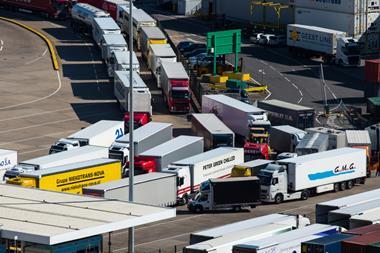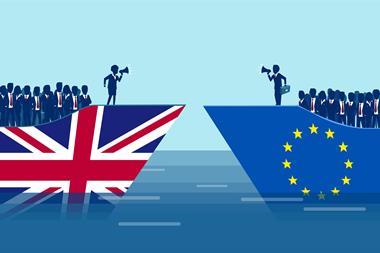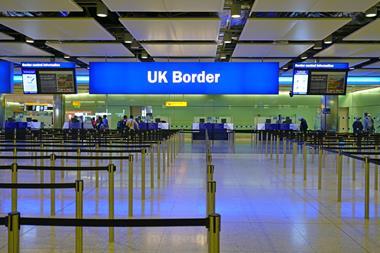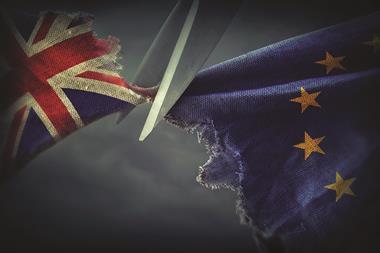The UK will leave the EU tomorrow, ending a 46-year relationship with the bloc. Experts from Retail Economics and law firm Squire Patton Boggs analyse what Brexit will mean for the UK retail industry, what milestones to expect and what scenarios could unfold by the end of the year.
What happens next?
Retailers will not be subject to any changes during 2020 as the UK will immediately enter an “implementation period” (IP), during which all EU rules, including trade rules, will continue to apply to the UK.
The IP will run from February 1 until December 31, 2020, and is intended to provide a period of stability during which the two sides can negotiate a new trading relationship.
February 2020
During February, the UK and EU will seek to agree an agenda and timetable for their negotiations on a new trade agreement. There is a wide range of issues that could be covered, and it is likely that some areas will need to be prioritised over others.
Indeed, a pragmatic phased approach to the negotiations could be adopted, which will leave some areas unresolved by the end of the year. The UK and EU could leave some areas of the negotiations unresolved at the end of the year when the two sides will have to agree on a way forward on a case-by-case basis.
“The good news for retailers is that rules – including tariffs – on trade in goods, access for retail services and cross-border ecommerce are all likely to make the cut for negotiations”
The good news for retailers is that rules – including tariffs – on trade in goods, access for retail services and cross-border ecommerce are all likely to make the cut for negotiations.
The UK will also be free to open trade negotiations with other countries, including the US, from February 1.
March to August 2020
This is when the substantive negotiations between the UK and EU will happen.
The UK has said that it wants a ‘free-trade agreement’ with the EU, which will deliver duty-free and quota-free trade with the EU, while at the same time allowing the UK to diverge from the EU in other areas of regulation.
The EU is willing to grant tariff-free and quota-free access, but only if the UK does not introduce new regulations that give its producers a cost advantage over EU competitors. Resolving this tension will be one of the biggest challenges in the negotiations.
A stocktaking meeting between the UK and EU in June will discuss progress and whether any extension of the IP is required to give more time to reach an agreement.
The government has insisted that it will not extend the IP, but the Withdrawal Bill gives the government the power to do so if it wishes and the EU may press for an extension if it thinks its priorities have not been adequately addressed.
September to December 2020
If sufficient progress has been made, this period will be used for the political ratification process in the EU and the UK of any new trade agreement.
However, if insufficient progress has been made and the IP is extended, then this period will be used for further negotiations.
January 2021 onwards
Provided that the IP has not been extended, the UK will become a fully independent trading nation on January 1, 2021.
In terms of trade with the EU, that will mean:
- All imports from the EU will become subject to customs checks and documentation at the border (except goods from the Republic of Ireland arriving in Northern Ireland);
- All imports from the EU will need to meet local content rules in order to benefit from lower or no tariffs negotiated in a free-trade agreement;
- Food imports from the EU may become subject to veterinary or plant health checks at the border;
- Some products from the EU may be subject to new tariffs if the UK-EU trade agreement fails to agree across-the-board zero tariffs;
- There is still a possibility that UK-EU trade will face a “cliff-edge” on December 31, 2020, if the UK and EU fail to reach a new agreement and do not extend the IP. In this case, imports from the EU will be subject to the UK’s most favoured nation (MFN) tariff rates.
In terms of trade with other countries, that will mean:
- The UK will be free to implement any new trade deals it has negotiated with other countries. Imports from countries that have bilateral deals with the EU, but which have not extended these deals to the UK, would become subject to the UK’s MFN rates;
- The UK will be free to set its own MFN tariff rates. These are the rates that apply to imports from countries that do not have an FTA with the UK and would apply to imports from the EU in the event that the two sides failed to strike a new FTA. It is worth remembering that in anticipation of a no-deal outcome in 2019, the government published a temporary MFN tariff schedule, which would have reduced almost all non-food tariffs to zero and slashed rates for most food products;
- The UK would be free to keep or scrap additional tariffs imposed by the EU. Of most interest to UK retailers, this could include the revision of anti-dumping duties on some imports from China and special tariffs on imports of a wide range of goods from the US, which were imposed as part of a trade dispute between the EU and the US.


























No comments yet